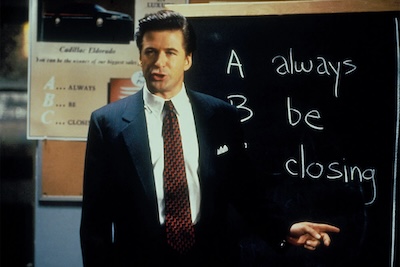Richard Chamberlain stands as one of the more underrated actors of his generation. From his breakout role as the title character in NBC’s Dr. Kildare–an unusually realistic medical dama for the time, through his unofficial “King of the mini-series” label into the ‘80s, the remarkably handsome Chamberlain was a consistent and reliably excellent performer on film and TV. A mult-talented performer adept in comedy and drama, Chamberlain also scored three top-40 hits in the early sixties, with his biggest hit, the theme to Dr. Kildare, making it all the way to the top ten.
Dr. Kildare ran for five seasons and 191 episodes before being canceled in 1966. It took a couple of years for Chamberlain to find his footing after the show’s end, largely because he was so connected with the character that it was difficult for studio execs and viewers to see him as anyone else. Chamberlain began making headway on the big screen in 1968 with the highly underrated Petulia (directed by Richard Lester, who would become an important part of Chamberlain’s career). Petulia, a heavy romantic drama, found him third-billed after George C. Scott and Julie Christie. Three years later, Chamberlain would give a strong performance as Tchaikovsky in Ken Russell’s The Music Lovers (co-starring Glenda Jackson). While Russell’s film received mixed reviews, The Music Lovers proved that Chamberlain could carry a movie on his shoulders.
Chamberlain’s first taste of mainstream success came in 1973 with Richard Lester’s adaptation of Alexandre Dumas’ The Three Musketeers. Of all the many interpretations of the Dumas novel, Lester’s has been the most revered since its release. His version received excellent reviews, was a worldwide hit, and made Chamberlain a movie star playing Aramis of the famed swashbuckling trio. The film’s cast was loaded with memorable names, including Michael York, Oliver Reed, Raquel Welch, Geraldine Chaplin, Charlton Heston, Faye Dunaway, and Christopher Lee. Chamberlain’s charm and wit held up well amongst this starry crew and allowed him to escape the shadow of Dr. Kildare for good. Lester’s 1974 sequel, The Four Musketeers: Milady’s Revenge, was nearly as well-received as its predecessor, and along with being part of the large ensemble in the hit Irwin Allen disaster flick, The Towering Inferno, that same year, Chamberlain was now a full-fledged movie star.
Having transitioned from TV to film (a notably difficult endeavor in the pre-prestige TV era kicked off by The Sopranos in 1999), Chamberlain made the unusual choice to return to the small screen, which was considered a step down in those days. In 1975, he played Edmond Dantes in another Dumas adaptation, The Count of Monte Cristo. The movie received strong reviews and earned Chamberlain his first Emmy nomination for Leading Actor in a TV film.
1977 saw Chamberlain splitting time between TV and film once again, with yet another Dumas adaptation, The Man in the Iron Mask, with Chamberlain playing the lead role of Phillipe. While not as well-regarded as his two Musketeers films or The Count of Monte Cristo, the star-studded film (with such notables as Ian Holm, Patrick McGoohan, Jenny Agutter, and LouisJordan among the cast) was a solid success and earned two Emmy nods for its crafts. On the film side, Chamberlain went to Australia to work with the great Aussie director Peter Weir to make the best film of the actor’s career, the haunting apocalyptic drama The Last Wave. In an elliptical work of art, Chamberlain plays an initially reluctant solicitor defending four aboriginal men whose indigenous background he unexpectedly connects with on a mystical level. Chamberlain’s character starts to have nightmarish visions of an oncoming flood that haunt him day and night. No fair ruining it for those who have not seen it, but the final shot of The Last Wave is terrifying and unforgettable. The Last Wave is one of the best films ever to come out of Australia and one of the best films of the ‘70s golden age of cinema.
In the mid to late ‘70s, a new(ish) method of storytelling would come into vogue on television: the mini-series. Productions like Rich Man, Poor Man, Holocaust, and especially Roots became small-screen sensations. Perhaps no other actor took advantage of the short-from series than Chamberlain. With Centennial in 1978, Chamberlain played a Scottish trader who, without ill intent, gets caught up in the gentrification and genocide of Native Americans during the move West in the 18th century. Centennial’s epic sweep covered nearly 180 years of history. Based on the James Michener novel of the same name, Centennial was not only the most expensive mini-series in history (with a price tag of $25 million–$125 million when adjusted for inflation), it was also wildly successful and well-regarded.
Hot on the heels of Centennial’s massive success, Chamberlain returned to the mini-series format, playing Englishman John Blackthorne in the first televised version (1980) of the James Clavell novel Shogun. While it would be hard to argue that Chamberlain’s Shogun matches up to the more recent version produced by FX, I would argue that his take on Blackthorne is much stronger than that of Cosmo Jarvis’ work on the deservedly heralded multi-Emmy winner from last year. Chamberlain gave a much more nuanced performance than Jarvis, who seemed to spit his every line out as if all of his dialogue was of equal importance. Regardless, Chamberlain’s Shogun became the second most-watched mini-series ever (after Roots), and earned him his second Emmy nomination as Lead Actor in a Mini-Series or Special.
After the success of Shogun, Chamberlain laid relatively low until 1983 with another mini-series, The Thorn Birds, which brought the actor back to Australia in the role of Father Ralph de Bricassart. Adapted from the novel by the Australian author Colleen McCullough, The Thorn Birds covered fifty years of the fictional Cleary family’s move from New Zealand to Australia. The series’ center features Chamberlain’s priest and his forbidden passion for Meggie Cleary (a stunning Rachel Ward). The Thorn Birds was even more successful than Shogun, supplanting that mini-series as the second most watched after Roots. The Emmys awarded the mini-series with a whopping sixteen nominations (including Chamberlain for Leading Actor), winning six.
Just two years later, Chamberlain was nominated for his fourth (and final) Emmy for playing the real-life character, Raoul Walenberg, a Swedish diplomat who was instrumental in saving thousands of Hungarian Jews during the Holocaust. The three hour and twenty minute film earned eight other nominations, winning four.
Chamberlain’s accomplishments by 1985 were nearing the staggering level, but after a quarter of a century run near the top of his profession, it all went away. He filmed two Indiana Jones/Romancing the Stone knock-offs titled King Solomon’s Mines and Allen Quartermain and the Lost City of Gold (both with a pre-stardom Sharon Stone). Considering the critical and commercial failure of the first film, it’s no small mystery how a sequel got greenlit. The twin failures seemed to stop Chamberlain’s momentum cold. The rest of his career is made up mainly of curios (he was the first person to play Jason Bourne in the 1985 two-part TV film version of The Bourne Identity), guest spots on episodic television, deep supporting roles on film, and two unsuccessful attempts to return to old glory with The Return of the Musketeers (1989) and The Thorn Birds: The Missing Years (1996). Chamberlain’s final credit of high merit can be found in a single episode of David Lynch’s Showtime series, Twin Peaks: The Return.
Still, a quarter of a century near the summit is a damn fine run. Chamberlain was so adept at playing Europeans and Australians that I was stunned to discover he was born in Los Angeles. His gift for accents and mannerisms of the many non-American characters he played bordered on the Streepian. It should also be noted that Chamberlain carried a heavy burden as an actor during all those years in major productions. Chamberlain was a closeted gay man who was outed unceremoniously by a French magazine whose name does not deserve reference. While Chamberlain may have been just past his prime when the outing occurred, I doubt it helped his career during the Reagan/Bush era. Chamberlain himself waited fourteen years to publicly address his sexuality in his 2003 memoir “Shattered Love.”
For an actor whose physical beauty, masculinity, and appeal to women were his stock-in-trade (along with his thespian gifts), the mental weight of having to carry the secret of his homosexuality must have been an awful burden to bear. As Chamberlain said, “I lived an enormous amount of my life pretending to be somebody else.”
But like many from his time, he bore it. In doing so, he became more than just a stalwart actor; he became an icon of his era.
Richard Chamberlain died on March 29, 2025. He was 90 years old.









